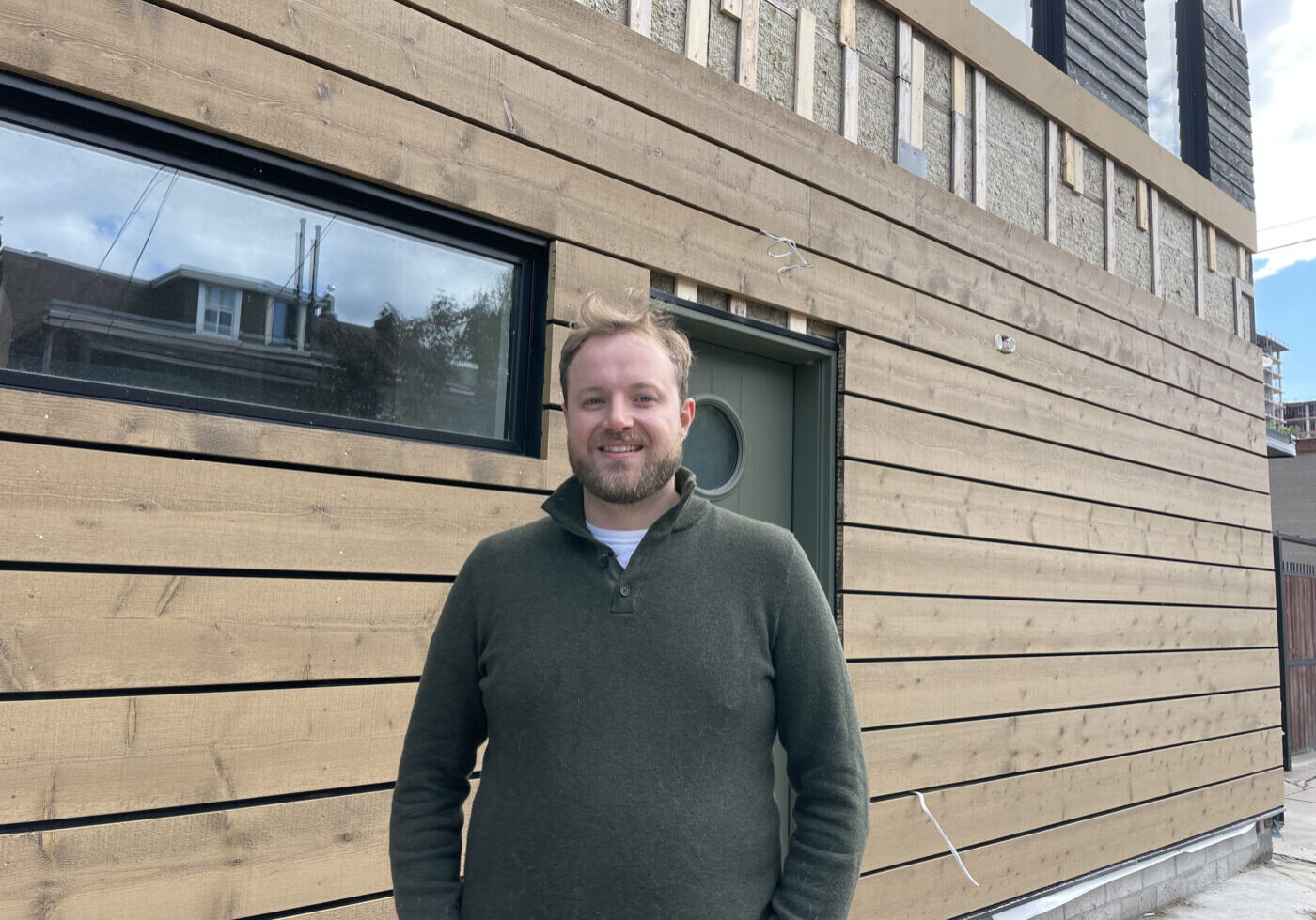THE GREEN LINE
ORIGINAL STORY
Co-ownership in Bloordale Village helps Torontonians face the housing crisis
The Green Line team checked out a co-owned house in Toronto's west end to learn how three couples pooled resources and bought a property together.

Lesli Gaynor and Parimal Gosai, co-founders of Husmates, stand outside a co-owned house on Russett Avenue.


Amanda Seraphina James Rajakumar
Indian immigrant with a post-grad in journalism from Centennial College. Now living in Grange Park, meeting new people, and hearing different stories. Has four names, so it’s a pick-your-player situation.
Nov. 15, 2024
Toronto is growing every day — not just in terms of people, but prices, too. Buying a home seems like a pipe dream in today’s housing market.
But one group in Bloordale Village believes where there’s a will, there's a way, thanks to its unique co-ownership solution.
Co-ownership is when two or more people buy a property together to pool resources and access the housing market.
“Co-ownership helps the housing crisis in a few ways,” says Lesli Gaynor who along with Parimal Gosai started Husmates, a real estate platform that teaches Torontonians about co-ownership. “We're looking for gentle density and now that we can build four units, by right, on most properties in the City of Toronto, there will be an expansion of the units. But now, we need to find the owners.”
“So, co-ownership allows for people to combine their resources, and buy those properties or develop those properties.”
The Husmates app helps you find the kind of residence you want, figure out finances and match users with other potential co-owners, according to Gaynor.
She says co-ownership combines the incomes of all partners to increase purchasing power and provides a community of people who can help with house maintenance, child care and more.
Gaynor emphasizes that co-owners should answer tough questions from the get-go, including: How do I exit if I need to? How do I resolve conflict if it arises? How do I deal with unexpected problems like someone losing their job?
“There are real benefits when it comes to the capacity for people to expand their communities, but you got to do it well so that you don't end up in a situation where you don't have a solution to the problem,” she explains.

Craig Ruttan, who co-owns a detached house with his friends, stands in front of the laneway house that he built in Bloordale Village.

Craig Ruttan, 36, used Husmates to buy a detached house in February 2020 with his partner and two friends who are a couple. The house had two floors that could be used as two units, as well as a garage that they turned into a laneway house, giving them a third unit.

The floor plan for the co-owned house on Russett Avenue.

Ruttan and his partner had been renting for years and wanted to own a house, but they didn't move forward until co-ownership came up.
“We didn't need a 2,000-square-foot house and we didn't want a 500-square-foot condo. So this opened up options in between, getting to live in a neighbourhood and getting to live in a place about the same size or a little bigger than our current apartment,” he says.
“When our friends approached us with this idea and they wanted to do it, it felt like it was the right match and the right time for us to take the leap.”

Before and after photos of a garage, which Craig Ruttan renovated into a laneway house on Russett Avenue.

Before moving into their house in April 2024, Ruttan and his friends added a third partner to buy one of the two units in the main house.
Jackie Da Silva, 39, and her husband had been friends with Ruttan for over 10 years and had had conversations about co-owning. Da Silva considered it for a few months and learned more about co-ownership before finalizing the agreement in February 2024, when she and her husband moved into the downstairs unit.
“My husband and I were actually looking for a house to move into but like a lot of people in our generation, we were priced out of a lot of neighbourhoods in Toronto that we really wanted to live in,” Da Silva explains.

Jackie Da Silva sits on the staircase of the house that she co-owns on Russett Avenue.

With co-ownership, each person has a legal share in the property, which can be divided up.
Another approach to shared housing is co-housing, which is more community-oriented and involves the sharing of common areas, such as the washroom and kitchen.
“Co-ownership usually means you're all in the same title, so you're owning a share or a fractional piece of an existing property,” explains Kristopher Stevens, executive director of Cohousing Options Canada.
“Co-housing usually means…you own your own private unit, but then you share the commons. And the commons are designed to be much more user-friendly, co-carrying, co-connected.”
The Canadian Real Estate Association says the median price of a detached house in Toronto a decade ago was under $600,000. Today, that’s doubled to over $1.2 million.
Although prices keep rising, Torontonians still have a shot at buying a home through options like co-ownership and co-housing.
Fact-Check Yourself
Sources and
further reading
Don't take our word for it —
check our sources for yourself.
Here's your chance to support the only independent, hyperlocal news outlet dedicated to serving gen Zs, millennials and other underserved communities in Toronto. Donate now to support The Green Line.
